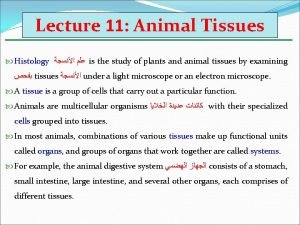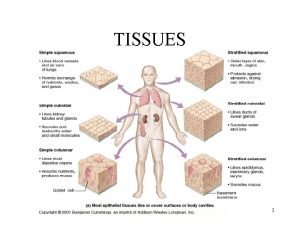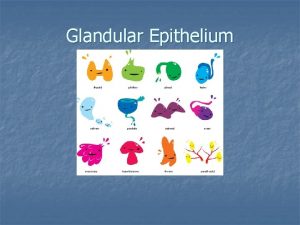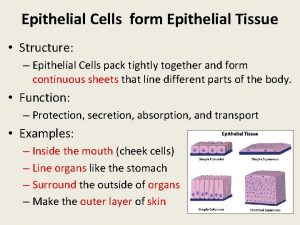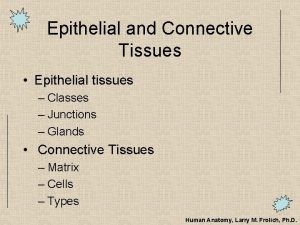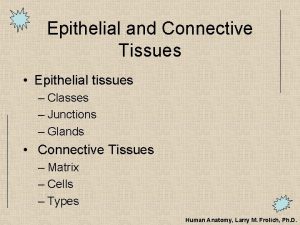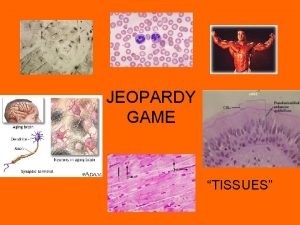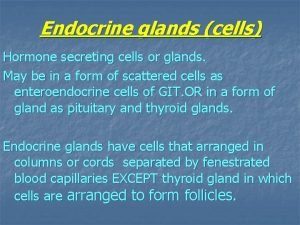Glandular tissues Glands originate from epithelial cells that



















- Slides: 19

Glandular tissues

Glands originate from epithelial cells that leave the surface where they developed and penetrate into the underlying connective tissue, manufacturing a basal lamina around themselves. Glandular epithelia manufacture their product intracellularly by synthesis of macromolecules that are usually packaged and stored in vesicles called secretory granules.

Classification of Glandular tissue

A. According to the mode of secretion Exocrine glands Endocrine glands Mixed glands B. According to the number of the cells forming the gland 1 -unicellular glandsintestine or of the respiratory tract. 2 -Multi-cellular glands C: According to the type of the duct 1 -Simple multi-cellular gland

D- According to the way in which the secretory products leave the cell Merocrine gland. Holocine gland. Apocrine gland. E- According to the type of secretion serous glands Mucous glands Mixed glands

Formation of glands from covering epithelia. Epithelial cells proliferate and penetrate connective tissue. They may–or may not–maintain contact with the surface. When contact is maintained, exocrine glands are formed; without contact, endocrine glands are formed. The cells of endocrine glands can be arranged in cords or in follicles. The lumens of the follicles accumulate large quantities of secretions; cells of the cords store only small quantities of secretions in their cytoplasm


Goblet cell Pancreas Gland



Simple straight tubular glands: present in small intestine

Simple branched tubular glands: gastric glands of the stomach

Sweat gland

Compound tubular gland: Brunner's glands of the duodenum

Compound alveolar, Mammary gland

submandibular salivary gland Compound tubule acinar

Sebaceous gland, simple branched alveoli

Parotid gland

Thank you
 Body tissues chapter 3 cells and tissues
Body tissues chapter 3 cells and tissues Eisonophil
Eisonophil Body tissue
Body tissue Anatomy chapter 3 cells and tissues
Anatomy chapter 3 cells and tissues 4 primary tissue types
4 primary tissue types Glandular epithelial tissue
Glandular epithelial tissue Salivary gland histology
Salivary gland histology Merocrine
Merocrine Epithelial cells
Epithelial cells Transitional epithelium
Transitional epithelium Crenated
Crenated Gustatory epithelial cells
Gustatory epithelial cells Exocrine glands
Exocrine glands Nucleus
Nucleus Transitional epithelial cells in urine
Transitional epithelial cells in urine Tissues are groups of similar cells working together to
Tissues are groups of similar cells working together to Chapter 3 cells and tissues figure 3-1
Chapter 3 cells and tissues figure 3-1 Tissues are groups of similar cells working together to
Tissues are groups of similar cells working together to Anatomy of a generalized cell figure 3-1 answer key
Anatomy of a generalized cell figure 3-1 answer key Where are loins on a human
Where are loins on a human








